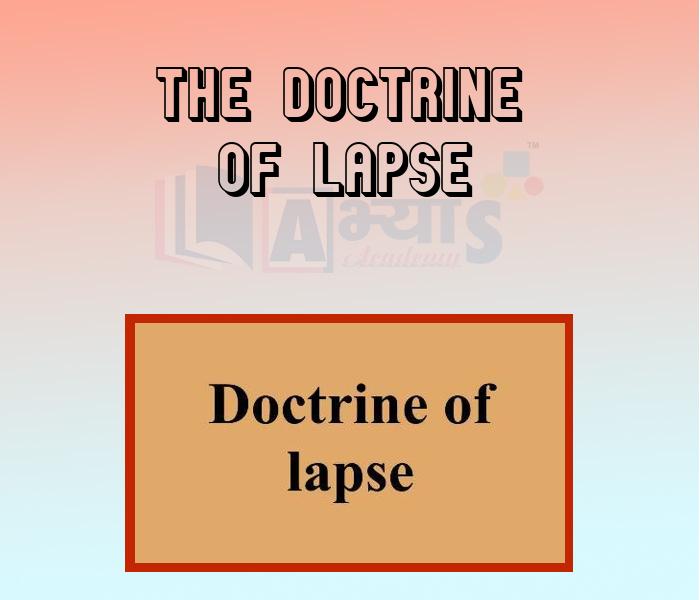The Doctrine of Lapse












The Doctrine of Lapse
The Doctrine of Lapse: The final wave of annexations occurred under Lord Dalhousie who was the governor-general from 1848 to 1856. He devised a policy that came to be known as the doctrine of lapse. The doctrine declared that if an Indian ruler died without a male heir or did not have child, then his kingdom would ‘lapse’, that is, become part of company territory but it was an accepted practice to adopt one. The British refused to recognise such adoption. One kingdom after another was annexed simply by applying this doctrine. Finally, in 1856, the company also took over Awadh.
This time the British had an added argument-they said they were ‘obliged by duty’ to take over Awadh in order to free the people from the misgovernment of the Nawab. Enraged by the humiliating way in which the Nawab was deposed, the people of Awadh joined the great revolt that broke out in 1857.
The Doctrine of Lapse was propounded by | |||
| Right Option : A | |||
| View Explanation | |||
Which of the following was the state that was not annexed by Lord Dalhouise by using Doctrine of Lapse ? | |||
| Right Option : C | |||
| View Explanation | |||
Identity the wrong statement : | |||
| Right Option : A | |||
| View Explanation |
Students / Parents Reviews [10]
It was a good experience with Abhyas Academy. I even faced problems in starting but slowly and steadily overcomed. Especially reasoning classes helped me a lot.

Cheshta
10thMy experience with Abhyas is very good. I have learnt many things here like vedic maths and reasoning also. Teachers here first take our doubts and then there are assignments to verify our weak points.

Shivam Rana
7thI have spent a wonderful time in Abhyas academy. It has made my reasoning more apt, English more stronger and Maths an interesting subject for me. It has given me a habbit of self studying

Yatharthi Sharma
10thIt has a great methodology. Students here can get analysis to their test quickly.We can learn easily through PPTs and the testing methods are good. We know that where we have to practice

Barkha Arora
10thA marvelous experience with Abhyas. I am glad to share that my ward has achieved more than enough at the Ambala ABHYAS centre. Years have passed on and more and more he has gained. May the centre flourish and develop day by day by the grace of God.

Archit Segal
7thAbout Abhyas metholodology the teachers are very nice and hardworking toward students.The Centre Head Mrs Anu Sethi is also a brilliant teacher.Abhyas has taught me how to overcome problems and has always taken my doubts and suppoeted me.

Shreya Shrivastava
8thMy experience with Abhyas academy is very good. I did not think that my every subject coming here will be so strong. The main thing is that the online tests had made me learn here more things.

Hiya Gupta
8thMy experience was very good with Abhyas academy. I am studying here from 6th class and I am satisfied by its results in my life. I improved a lot here ahead of school syllabus.

Ayan Ghosh
8thAbhyas Methodology is very good. It is based on according to student and each child manages accordingly to its properly. Methodology has improved the abilities of students to shine them in future.

Manish Kumar
10thIt was good as the experience because as we had come here we had been improved in a such envirnment created here.Extra is taught which is beneficial for future.
